From Dhaka to Balochistan: Pakistan's Recurring Tragedies That It Draws No Lessons From
Flashforward from 1971 to 2025 to a Pakistan facing almost the same kind of problems that it was facing in 1971: same intrusions of military in public affairs, same hopelessness, same corruption, same or more inflation and, most importantly, the same threat of rebellion.
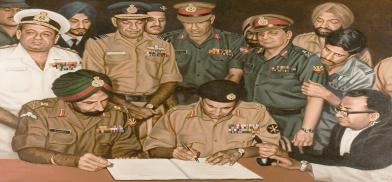
Imagine today is December 16, 1971 and you are a Pakistani soldier present at Suhrawardy Udyan, Dhaka, seeing your leader General Amir Abdullah Khan Niazi, standing, surrounded by troops and holding a surrender paper in his hand. The same General Niazi was very enthusiastic just three days before when he was asked about the conditional surrender of the Pakistani Army, to which he replied, “Either we live or we die (there will be no surrender)”! Then the reporter asked him about the loss of lives in Dhaka, this time he exclaimed, “It’s the price of freedom, mine (freedom), my country Pakistan’s (freedom)”. The reporter was again going to ask a question but was interrupted by the General who said, “Pakistan will stay (in Dhaka)…”, as the chanting of “Long live Pakistan! Long live Pakistan!” arose in the crowd.
Today, he is reading the harsh terms of the surrender paper handed to him by the Commanding-in-Chief of the Indian Army, Lieutenant General Jagjit Singh Aurora. After reading the terms, your leader reluctantly took his seat and signed the surrender of 90,000 troops, gave up almost half of your country’s land, shamed all the martyrs who lost their lives, and has left an indelible mark on Pakistan’s national memory.
Now, my soldier, flashforward from 1971 to 2025 to a Pakistan facing almost the same kind of problems that it was facing in 1971: same intrusions of military in public affairs, same hopelessness, same corruption, same or more inflation and, most importantly, the same threat of rebellion. The insurgency in Balochistan, the cry for life in FATA (Federally Administered Tribal Areas), the terrorism in Khyber Pakhtunkhwa and high inflation and political instability throughout Pakistan has caused despair and hopelessness to millions of Pakistanis. There is a confusion between freedom fighters and terrorists, a confusion between rights seekers and rebels, and the most important one, a confusion between ‘is state our friend or is it our enemy?’
The Tragedy of Balochistan
The province where such confusions converge is Balochistan. It is the largest (347,190 sq km) and least populous (15 million) province of the country. This land is rich in natural resources like natural gas, coal, copper, gold, iron and chromite. Balochistan holds great importance, acting like fuel for Pakistan’s economy. Its significance include the Sui gas field, which is the largest gas reserve of Pakistan and covers up to 40 percent of total gas needs of the country; Gwadar, a small fishing city, which plays an important role in the China Pakistan Economic Corridor; the gold and copper reserves in Reko Diq, which boosts the economy of the country and many others.
A person unaware of the current situation of Balochistan would probably think that this province which has given so much to the country would be the most developed province of Pakistan but the reality is quite the opposite. If the story of Balochistan’s importance knows no bounds, then the story of its suffering is equally unending. A grim reality of this province remains largely hidden from the mainstream national discourse. Over the past two decades, thousands of people have been forcibly disappeared, many of whom were later found dead or remain missing to this day. In some regions near Chagai, where Pakistan conducted nuclear tests in 1998, alarming reports suggest that children are being born with physical deformities and health complications. Despite being one of the richest provinces in terms of natural resources, Balochistan continues to lack access to basic human needs such as clean water, electricity and education.
Situation changed under Musharraf
But the question of responsibility for Balochistan’s persistent disparities remains complicated. For years, successive governments have blamed Baloch tribes, nationalist movements and militant organizations for perpetuating instability. While the unrest in the region predates the 2000s, it was largely contained until the turn of the century when Pakistan was under the rule of a military dictator, General Pervez Musharaf. Under Musharaf, the situation in the province changed drastically and turned violent.
It all began in 2002, when Pakistani and Chinese governments launched the construction of a deep-water port at Gwadar. Though the project aimed to increase the economic growth and employment in Balochistan, things took a wrong turn when local land was bought for the port and cantonments, but the work was assigned to workers and officials from other provinces. This was a huge blow for the Baloch population. Many of them started to see these developments as increasing Punjabi immigration into the province and a threat to their ethnicity, nationality and rights. Demands were made from the government that many of the jobs in these projects should be reserved in advance for ethnic Baloch but these demands were rejected. As a result, the sense of deprivation and alienation started to develop among tribes which resulted in the growth of violent armed protests throughout the province.
Initially, these protests were limited to some areas of the Marri tribe and were led by Balach Marri, the younger member of the Marri Sardari family. Balach was also one of the key leaders of Baloch Liberation Army (BLA), a prominent militant organization in Balochistan that has carried out more than 300 attacks across the country. After 2005, the intensification of military operations caused Balach to migrate to Afghanistan, where he was killed in 2007, either by NATO drone strikes or more likely by Pakistani intelligence,
Seeds of revolt
The armed protests took a more serious turn when it spread to the parts of Bugti tribe, led by their Sardar, Nawab Akbar Bugti, the former Governor and Chief Minister of Balochistan. Bugti mounted strong retaliation against Musharaf administration’s policies, opposing the increased military presence in his area and wanted a large share of revenues from the Sui gas fields for Balochistan. When these demands were rejected, he ordered his men to sabotage gas pipelines in Sui in order to blackmail the state, but Musharaf did not yield. In fact, the administration itself was divided between hardliners, who wanted to crush the rebellion and the ones who wanted to solve the matter by negotiating with Bugti.
However, two events made the dialogue impossible and changed the skirmishes into full scale revolt. The first incident happened on January 2, 2005, when a doctor named Shazia Khalid was raped in the military base in Bugti’s area. Bugti alleged that a Pakistan Army officer, Captain Hammad, was responsible for it and demanded an open trial. Meanwhile, the military alleged that a Bugti tribesman was responsible. Bugti took it as a personal insult and broke off negotiations with the government.
The second incident proved to be quite drastic when Musharaf visited Kohlu in Balochistan and rockets were fired at his helicopter. Though no group claimed responsibility, the blame fell on the Bugtis. This gave hardliners within a state a justification to intensify military operations in the region. On December 26, 2006 Nawab Akbar Bugti was killed in a missile strike that destroyed the cave where he had taken refuge.
The news of Nawab Akbar Bugti's death, followed by the killing of Balach Marri in Afghanistan, spread like a wildfire. These losses became the symbol of revolution and resistance among Baloch tribesmen and brought a new intensified phase in the rebellion. Even those who were not hardcore nationalists got involved in the separatist movement and those who were already fighting for separation grew more determined. The anger against the state grew across Balochistan. Militant organizations like BLA (Baloch Liberation Army), BLF (Baloch Liberation Front), and BRA (Baloch Republican Army) became more active. They started targeting not only paramilitary forces but also prominent political figures and settlers who had immigrated to Balochistan. Low level ethnic cleansing started and bakers, policemen, drillers, technicians, and teachers belonging to other provinces were targeted and killed. Data compiled by South Asia Terrorism Portal (SATP) shows that from 2006 to 2023, 254 non-locals have been killed in Balochistan by armed militias—198 of them Punjabis and 37 Sindhis.
State Repression and Disappearances
The State also did not hold back in tackling the insurgency. It responded with a series of harsh and often inhumane measures including military operations, enforced disappearances and mass displacements. According to the report of Pakistan Commission of Inquiry on Enforced Disappearances (COIED), from 2011 till January, 2024 over 2,752 people were forcibly disappeared in Balochistan. Many of them were later found dead, some remain in jail without charge and only a few were released.
One such case reported by Human Rights Watch was that of Abdul Ghaffar Lango, a 39 year old Baloch activist. In December 2009, Lango had taken his wife to a hospital in Karachi for treatment. When they were exiting the hospital ten men in two pickup trucks approached the couple, started beating Lango with rifles, dragged him into one of the pickups and drove away. After two years, on July 1, 2011 his mutilated corpse was found in an abandoned hotel in Lasbela district of Balochistan. But the case of Lango is not an isolated one. Over the past two decades, hundreds of Baloch men have met the same fate of tyranny and human rights violation for rising against the state. The extent of this tyranny was further exposed in 2014 when three mass graves were discovered by locals in the Tootak area of Khuzdar district in Balochistan. A total of 103 decomposed bodies were found, they were too damaged to be recognized. Civil society and rights organizations suspected that these were victims of enforced disappearance, yet no independent investigation was ever conducted. Instead, the Pakistani Army took control over the area and did not let any civilian or media outlet to visit the site.
A Deeper Crisis
The oppressive crackdowns by the Pakistani State and years of uprisings by Baloch has eroded an element of trust between them. The State views Baloch nationalists as separatists and their militias as enemies funded by India's RAW (spy agency) while Baloch see the state as a colonizer of their resources and suppressor of their rights. No permanent reconciliation has been ever achieved and every time violence has taken precedence over dialogue.
This deepening mistrust found a new battlefield in 2015 with the launch of China Pakistan Economic Corridor (CPEC), a multibillion dollar project which aims to connect the Chinese province of Xinjiang to the Gwadar port in Balochistan. While CPEC promised infrastructure, development and employment opportunities for the local population, many Baloch viewed it as yet another instrument of exploitation that excluded them from its benefits. This growing resentment fueled violent resistance. For years, Baloch nationalist groups and armed militias have attempted to hinder the progress of CPEC by targeting Chinese workers. According to Pakistan's National Counter Terrorism Authority (NACTA), as reported by Dawn, 14 attacks targeting Chinese workers have occurred since 2021 which resulted in death of 20 Chinese personnel and injuries to 34 others. Four of these attacks took place in Balochistan. The aim of all these attacks was to sabotage the progress of CPEC.
This has become a serious dilemma for Pakistan. On one hand, the country desperately needs economic growth and CPEC brings in lots of investment; on the other hand, the attacks on Chinese personnel jeopardize the very success of the project. These attacks have led the State to take more severe actions against the nationalists, but such measures have failed to contain the insurgency and have, in fact, intensified it even more. A stark example of this failure is the recent hijacking of the Jaffar Express by the Baloch Liberation Army, which resulted in the death of 25 individuals, including civilians and security personnel.
The Balochistan conflict is not simply a struggle of geography or resources. There is a deeper crisis rooted in trust, identity, and justice. The decades-long cycle of state oppression and armed rebellion has only widened the chasm between Balochistan and the Pakistani federation. Militancy cannot bring lasting peace, nor can militarized crackdowns resolve grievances rooted in years of marginalization. Pakistan needs a bold, peaceful and just political settlement, the one that prioritizes dialogue over dominance, rights over rhetoric and dignity over deterrence. Recent voices of peaceful resistance, like that of Maharang Baloch, highlight the possibility of nonviolent engagement and political reconciliation.
Yet, the State’s treatment of such voices suggests the continued unwillingness to make the necessary political reforms. For Balochistan to heal and for Pakistan to thrive as a truly united federation, it must learn from its past mistakes and choose a future anchored in accountability, autonomy and mutual respect.
(The author is a student of International Relations at the University of Peshawar, Pakistan. Views expressed are personal. He can be contacted at yamaankhan_arbab@hotmail.com )




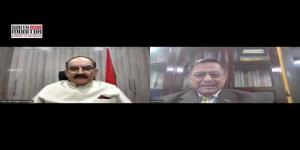

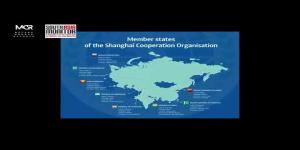

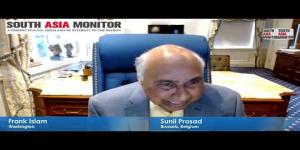
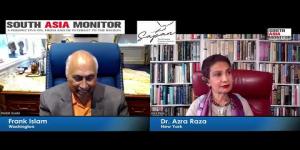
Post a Comment